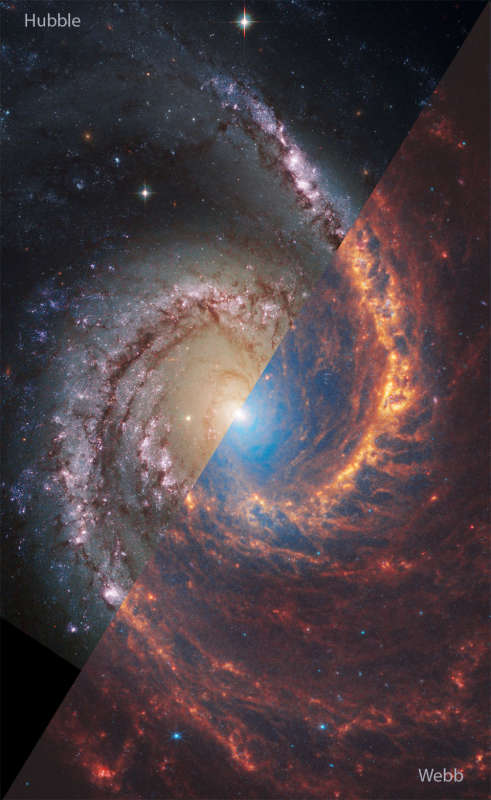 |
Астронет: Астрономическая картинка дня Спиральная галактика NGC 1566 от телескопов "Хаббл" и "Джеймс Вебб" http://variable-stars.ru/db/msg/1919757/eng |
APOD: 2024 February 6 Б NGC 1566: A Spiral Galaxy from Webb and Hubble

| << Yesterday | 5.02.2024 | Tomorrow >> |

Credit & Copyright: NASA,
ESA,
CSA,
STScI,
J. Lee (STScI),
T. Williams (Oxford),
R. Chandar (UToledo),
D. Calzetti (UMass),
PHANGS Team
Explanation:
What's different about this galaxy?
Very little, which makes the
Spanish Dancer galaxy,
NGC 1566,
one of the most typical and photogenic
spirals on the sky.
There is something different about
this galaxy image, though,
because it is a diagonal combination of two images: one by the
Hubble Space Telescope on
the upper left, and the other by the
James Webb Space Telescope on the lower right.
The
Hubble image was taken in
ultraviolet light and highlights the locations of
bright blue stars and
dark dust
along the galaxy's impressive spiral arms.
In contrast, the
Webb image was taken in
infrared light
and highlights where the
same dust emits more light than it absorbed.
In the rollover image, the other two sides of these images are revealed.
Blinking between the two images shows which
stars
are particularly hot because
they glow brighter in ultraviolet light,
and the difference between
seemingly empty space and infrared-glowing dust.
Image Crunching Opportunity:
Take NASA's
Astrophoto
Challenge
Authors & editors:
Robert Nemiroff
(MTU) &
Jerry Bonnell
(USRA)
NASA Web Site Statements, Warnings,
and Disclaimers
NASA Official: Jay Norris.
Specific
rights apply.
A service of:
LHEA at
NASA /
GSFC
& Michigan Tech. U.